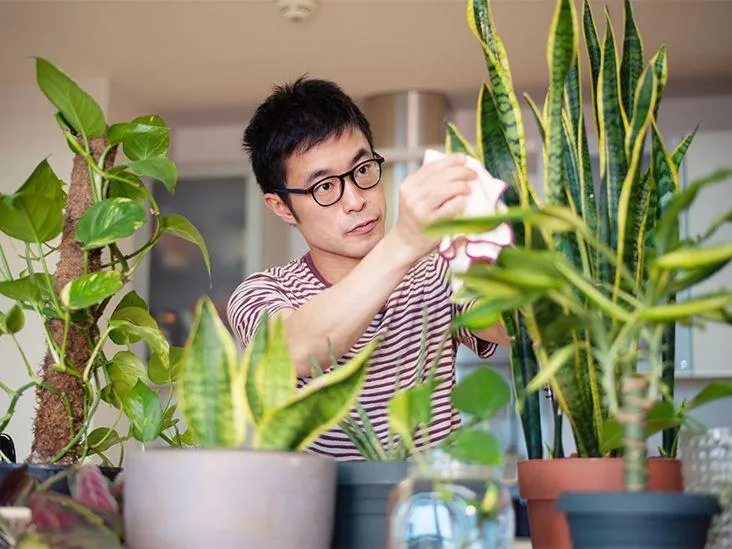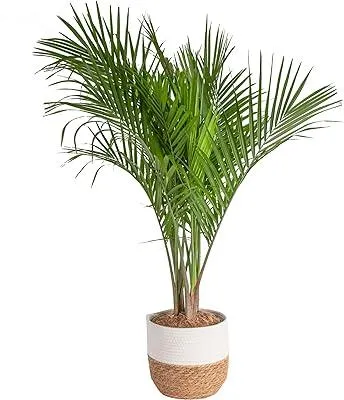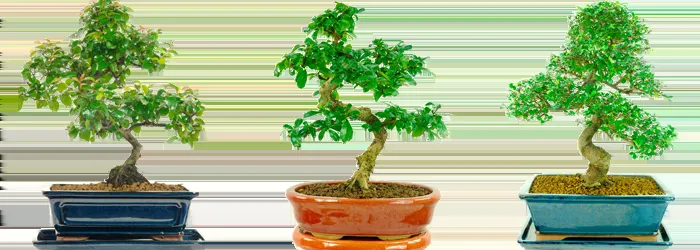The Best Indoor Trees for Your Home
Have you been wondering what type of indoor tree would work well in your home? There are several excellent varieties that thrive when grown inside. In this article, I’ll explain the top indoor tree options and help you choose one that matches your space and care needs.
Benefits of Having an Indoor Tree
Before getting into the specific varieties, let’s cover some of the reasons why indoor trees can be a great addition to your living space. From my experience helping many clients select houseplants, trees provide some unique benefits:
- They add natural beauty and greenery to your interior. This makes small rooms feel more open and airy.
- Many tree varieties are effective at cleaning the indoor air by absorbing pollutants like benzene and formaldehyde. This can improve your wellbeing.
- Trees have been shown to help reduce stress and boost relaxation. Their calming presence makes them especially well-suited for bedrooms.
- Caring for a tree can be a meditative task. Watering, pruning, and rotating it brings a sense of accomplishment.
- properly placed trees enrich indoor spaces by providing privacy screening or defining different areas of a room.
From my experience keeping indoor trees myself, these benefits make the minimal effort of care more than worthwhile. Let’s look at some top options.
Spider Plant
Spider plants, or Chlorophytum comosum, are one of the best and most popular choices for low-light conditions. They’re basically indestructible unless you seriously overwater them.
This tree grows gracefully trailing stems with bright green leaves and small white flowers that emerge in summer. It thrives in bright, indirect light and normal room temperatures. Water only when the soil feels dry.
Propagation is easy too – you can start new plants by dividing the existing stems or planting spider plantlets that form at the end of each leaf. Overall, spider plants are a kind of indoor tree that suits beginners.

Chinese Evergreen
For something with larger, more substantial foliage, try Aglaonema. Common names include Chinese evergreen or pink lady. These accept lower light and retain pleasingly uniform leaves in tones of green, pink, cream, or variegated.
The leaves emerge from sturdy green stems. Chinese evergreens can grow several feet tall indoors given enough time. They do best in medium to low light away from direct sun. Allow the top inch of soil to dry between waterings.
As an added bonus, Chinese evergreens make great privacy screens. Place one in a corner to divide a room without blocking natural light flow. They’re very resilient plants from my experience of keeping them for years.
Dwarf Umbrella Tree
Also called a schefflera, the dwarf umbrella tree (Schefflera arboricola) has a unique tree-like form. As the name suggests, it stays relatively small – about 4 to 6 feet tall maximum when grown indoors.
What really makes this variety special are its leaves. Each palmate leaf resembles an open miniature umbrella with 5 to 7 leaflets radiating outward. The leaves offer lovely texture to a room.
Dwarf umbrella trees accept medium to low light. Keep the soil consistently moist in warmer months, but allow it to dry slightly between waterings in winter. They’re sturdy and attractive indoor trees.

David Austin Roses
For a decorative tree with a delightful fragrance, consider David Austin roses. Bred for garden use, many varieties adapt well to growing indoors too if given the right conditions. Look for semi-evergreen types rated as having good disease resistance.
Potential varieties to try include ‘Mary Rose’, ‘Graham Thomas’, and ‘Fantin-Latour’. Plant in fertile, well-draining soil and provide at least six hours of direct or very bright filtered sunlight daily. In winter, reduce watering and keep above 50°F.
Prune to shape in late winter. Then sit back and enjoy the stunning blooms and delightful aroma wafting around your home! From my experience, David Austin roses absolutely captivate everyone who visits.
Dwarf Date Palm
For a true “tree tree” suitable indoors, the dwarf date palm is tough to beat. As the name implies, it stays relatively small at 6 to 10 feet tall maximum when grown inside.
The elegant feather-like fronds emerge from a thick central trunk. This palm offers a resort-style look perfect for large living spaces or offices. It thrives in medium to low light conditions and prefers consistent moisture.
Given adequate sun exposure and a well-draining potting mix, a dwarf date palm can live for years indoors. Look for a specimen that has been root-pruned for compact growth. Just be prepared for maintenance pruning of older fronds as it matures. Still, I’d rank this variety as one of the coolest indoor trees of all.

So in summary, whether you want something low-maintenance like a spider plant or a true tree form like a palm, there are great indoor varieties to choose from to suit your space. Decide if you want evergreen or deciduous foliage, fragrance, lush texture or a privacy screen. Then pick one to add natural beauty to your home!
Top Indoor Trees for Your Home
| Tree | Height | Care Level | Light Needs | Notes |
|---|---|---|---|---|
| Peace Lily | 1-3 feet | Low | Low to Medium Light | Toxic to pets, flowers are white and fragrant |
| Snake Plant | 2-4 feet | Low | Low Light | Tolerates neglect, sturdy and pet safe |
| Pothos | Trailing vines | Low | Low to Bright Light | Easy to care for, trails attractively |
| Chinese Evergreen | 1-3 feet | Low | Medium Light | Colorful foliage, tolerate low light |
| Dracaena | 2-6 feet | Low | Medium Light | Popular choice, comes in various colors |
FAQ
-
What kinds of trees work well as indoor trees?
There are quite a few tree varieties that grow nicely inside homes and offices. Some good options include the Chinese elm, money tree, dwarf date palm, ficus, and rubber plant. These trees tend to be very low maintenance and tolerate lower light conditions well.
-
How big do indoor trees get?
The size that an indoor tree reaches depends basically on the specific variety. Generally speaking, trees sold as “indoor trees” or “houseplants” stay fairly small. Most only reach a height of around 6 feet or less. Some stay quite a bit smaller, maybe only a few feet tall. So they don’t tend to get too huge for living indoors. At the same time, they still make a nice impact in a home or office with their natural greenery.
-
What kind of light do indoor trees need?
While they can tolerate low light better than other plants, most indoor trees still do best in a spot with bright, indirect light. A south or east-facing windowsill is ideal. West or north windows provide less intense light. Trees usually cannot survive for long in very low light areas like deep inside rooms or underground basements. But some varieties, like the Chinese elm, are remarkably robust and can even adapt to offices with fluorescent lights.
-
How often should indoor trees be watered?
The frequency of watering depends a lot on the tree species and conditions. In general, trees need water when the topsoil feels dry to the touch. It’s best not to have a fixed schedule and instead check the soil moisture level. Some trees, like fiddle-leaf figs, are susceptible to root rot if their soil stays constantly moist. Others, like palms, prefer consistently moist soil. Overwatering accidents seem to be kind of common for indoor trees, so it’s wise to err on the side of less frequent watering.
-
What kind of care do indoor trees need?
Basic indoor tree care involves watering when the soil is dry, occasional fertilizing during the growing season, and pruning away any damaged or diseased parts. Trees also benefit from being dusted and occasionally wiped down with a damp cloth. Because they are potted, trees also need repotting every few years or when their roots start circling the inside of the container. Indoor environments lack fresh air, so trees may appreciate being moved outside on nice days as well. Overall, they tend to be very low-maintenance additions to homes or offices.

-
Are indoor trees difficult to care for?
Despite what some people think, indoor trees are surprisingly not very difficult to look after. As mentioned earlier, they have modest requirements for light, water, and care. As long as you choose a suitable tree variety and meet its basic needs, it should do quite well indoors for years. Sure, we’ve all heard horror stories about people killing their money trees. But honestly, if you can keep other common houseplants alive, an indoor tree is definitely not out of your reach. Just pay close attention at first until you learn its particular habits. Overall, the rewards of having a lovely potted tree far outweigh any challenges in my opinion.
-
What are some potential issues with indoor trees?
While trees add beauty, they can potentially also cause problems if not careful. Pests like aphids and scale insects sometimes affect indoor trees. Too little or irregular water leads to brown leaf tips and drop. Overwatering causes root rot. Trees may grow very tall very fast and need repotting more often than expected. However, with the right variety selection and care routine, most issues can be avoided or resolved. Indoor trees basically just need what all houseplants need – the right conditions and a little TLC.
